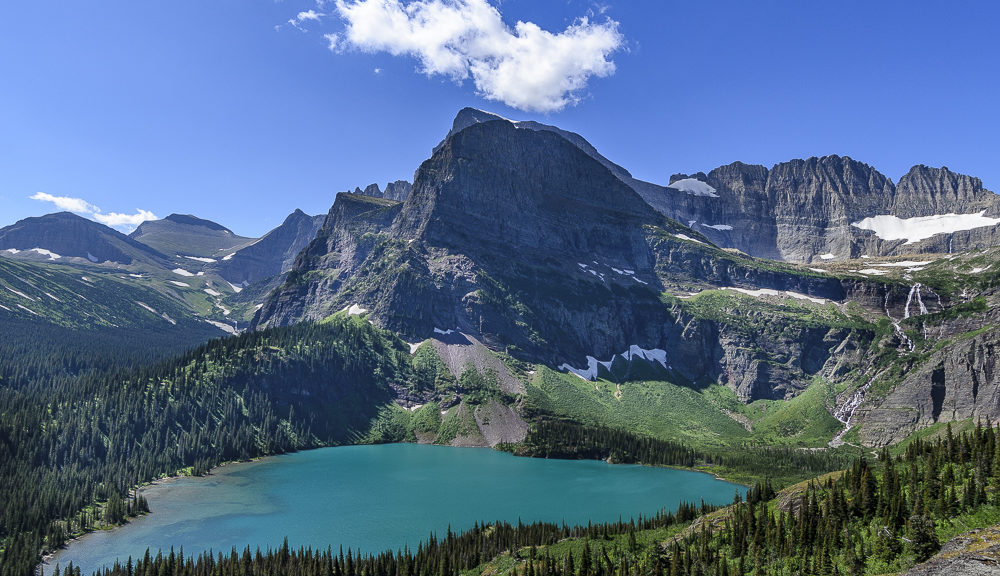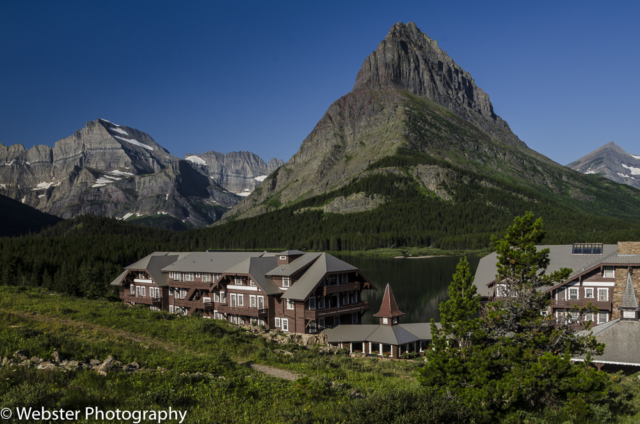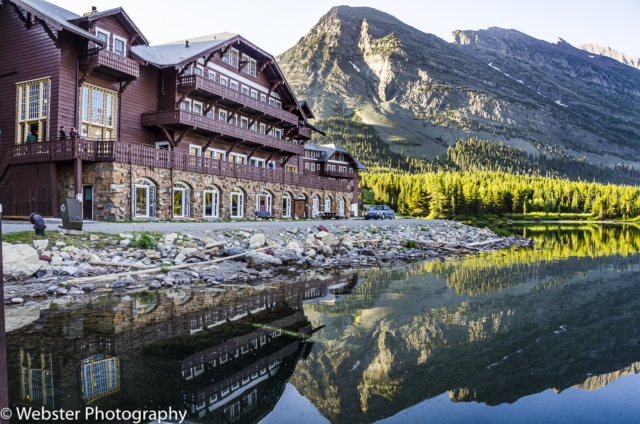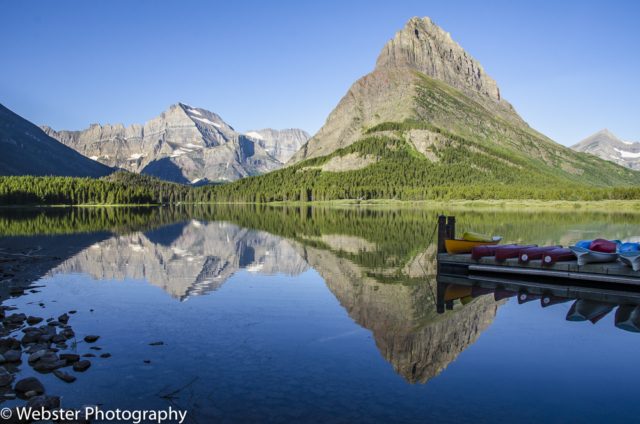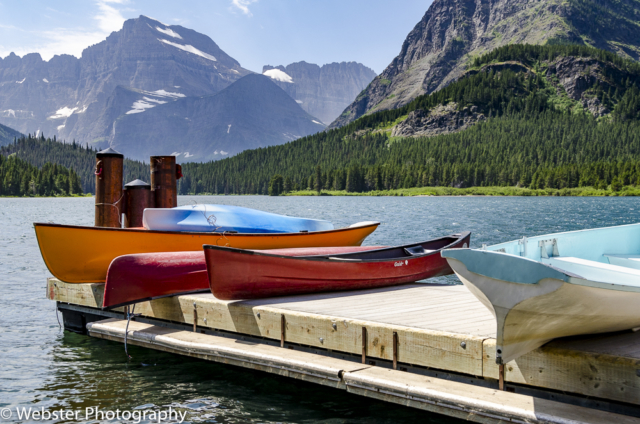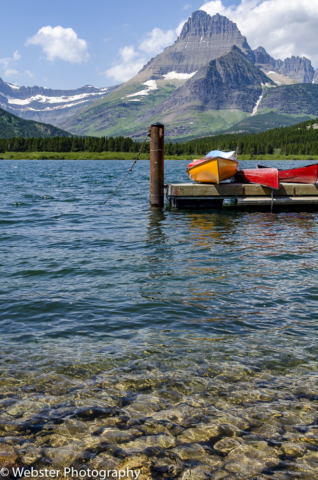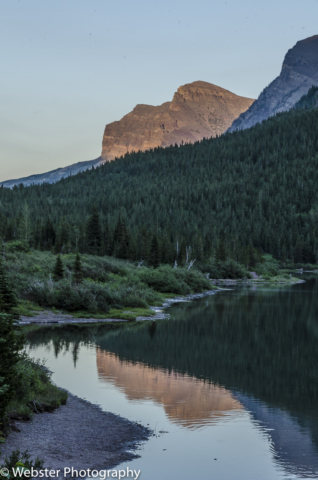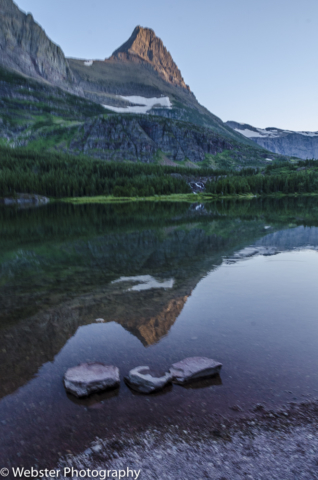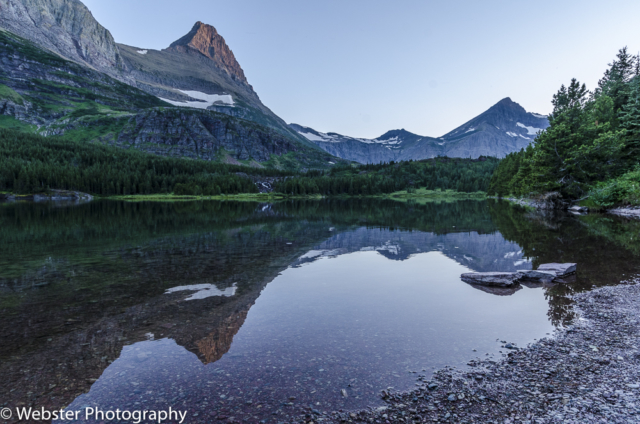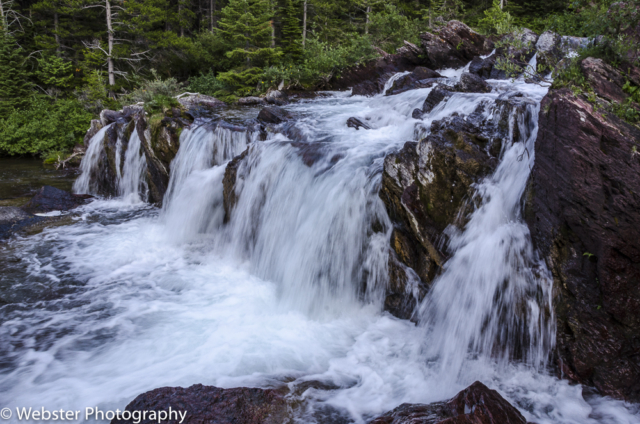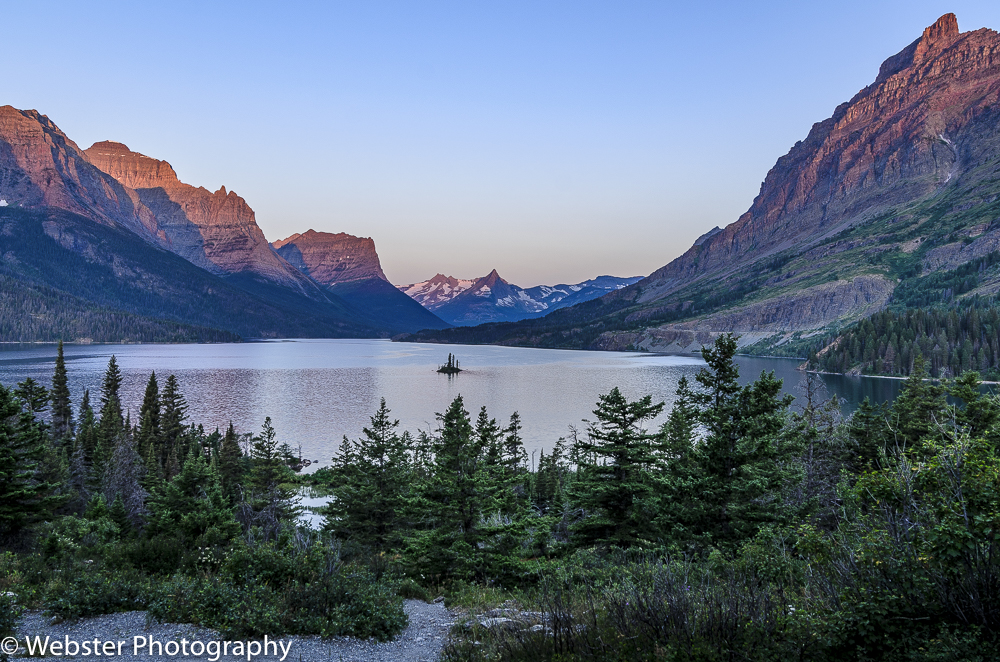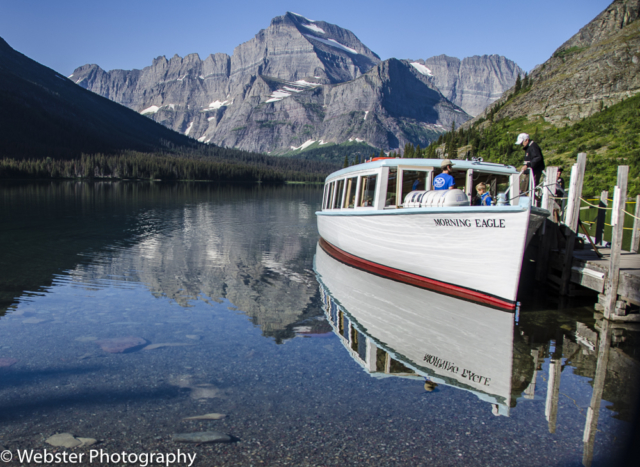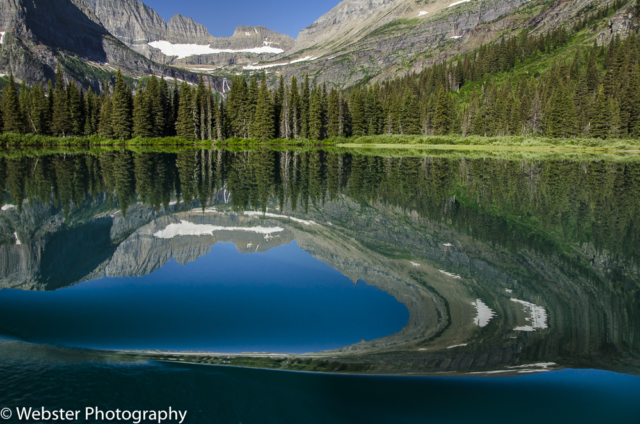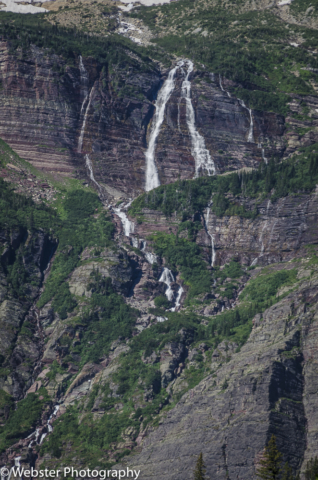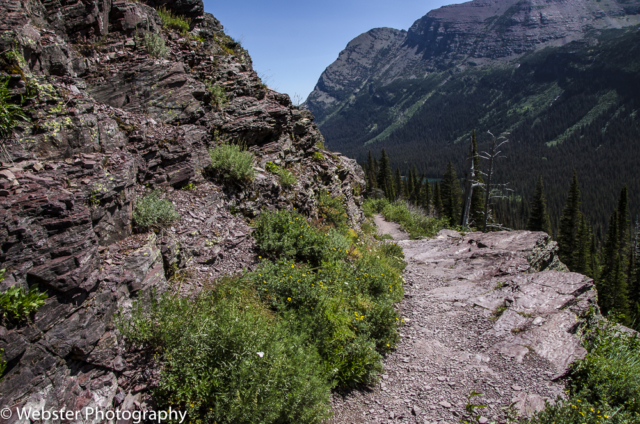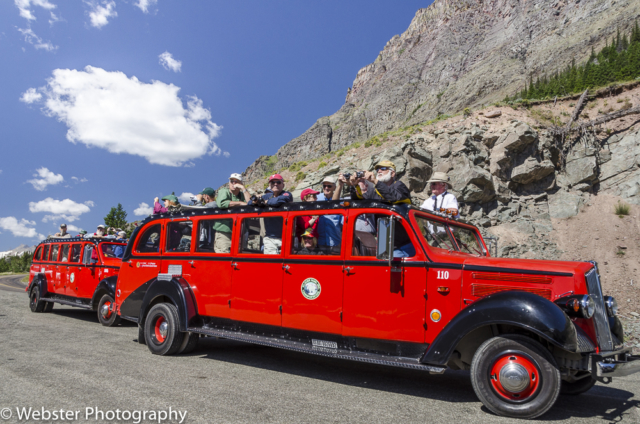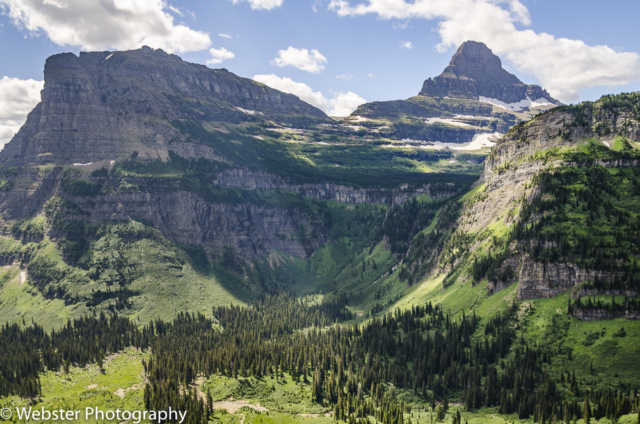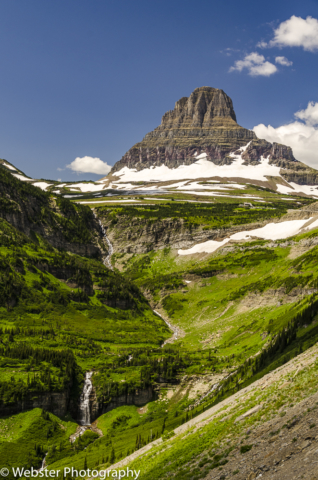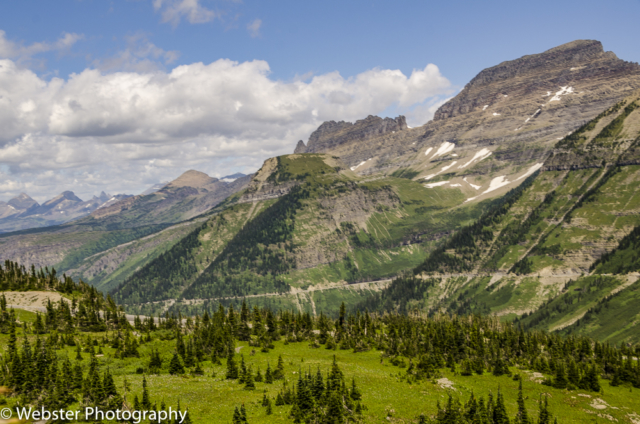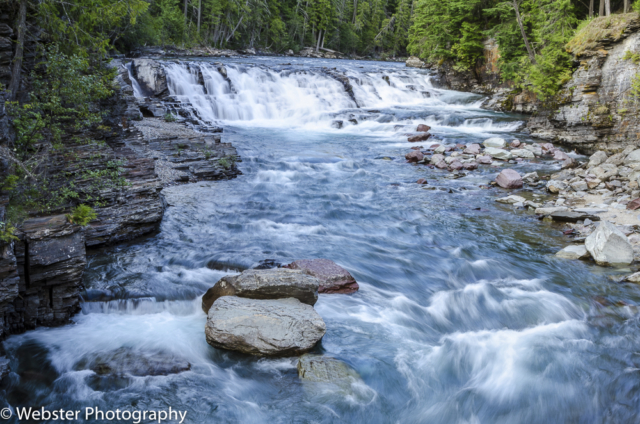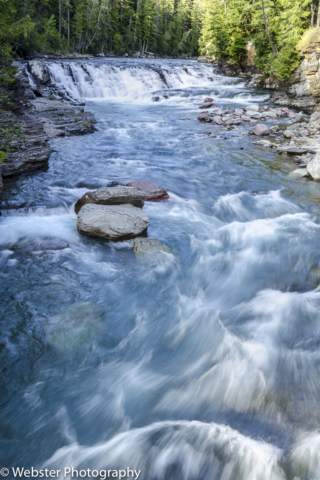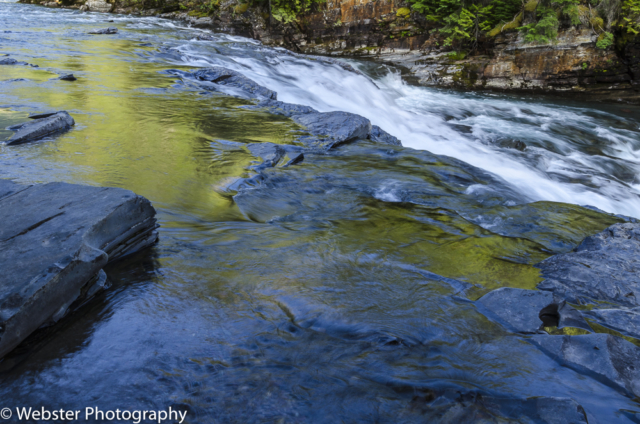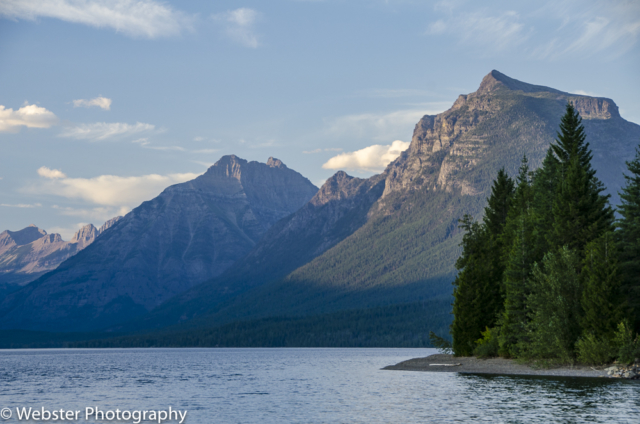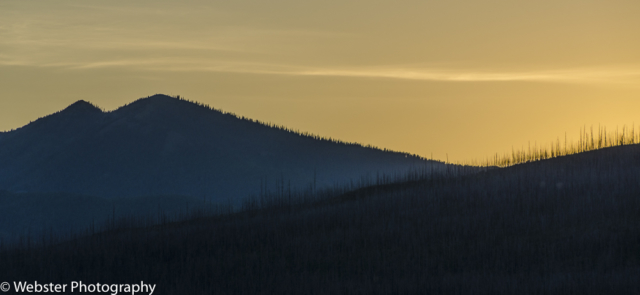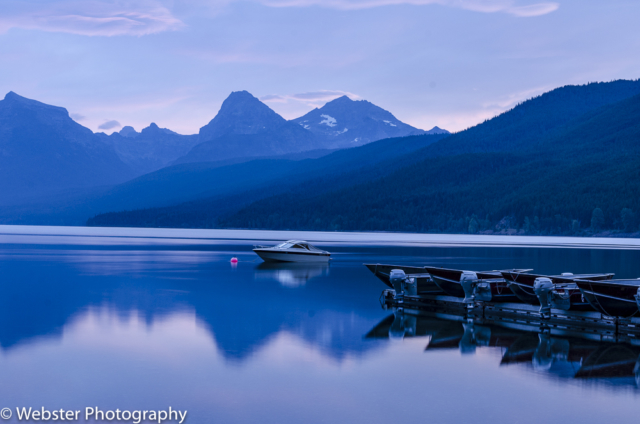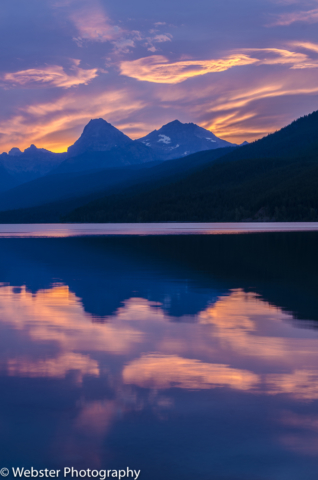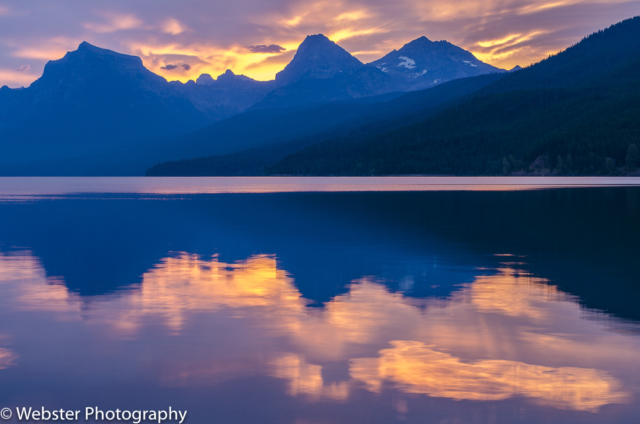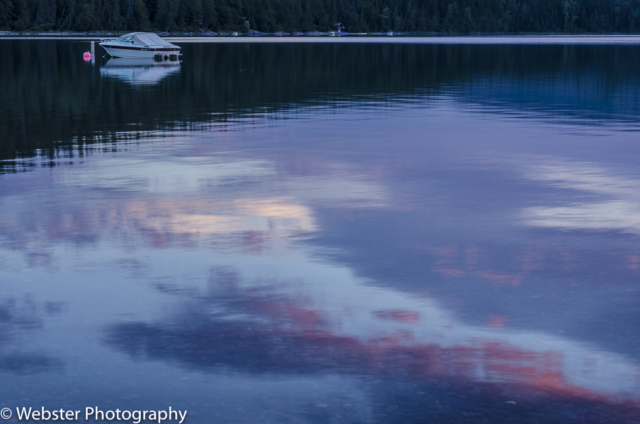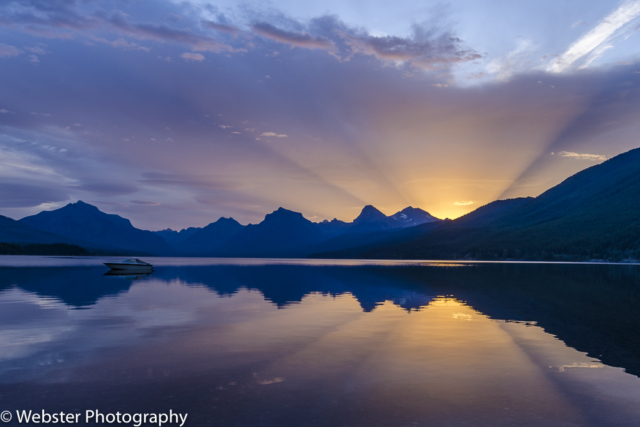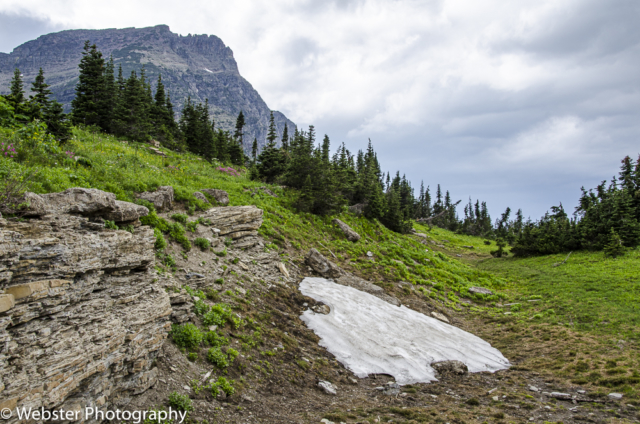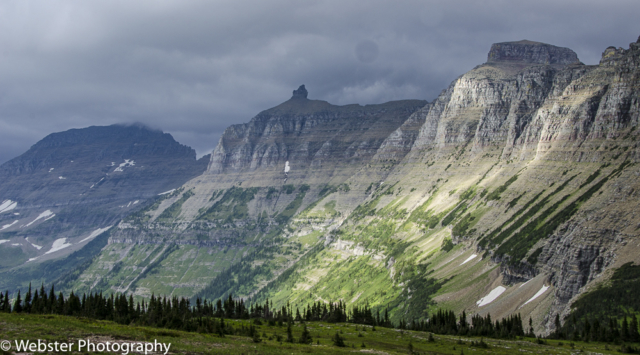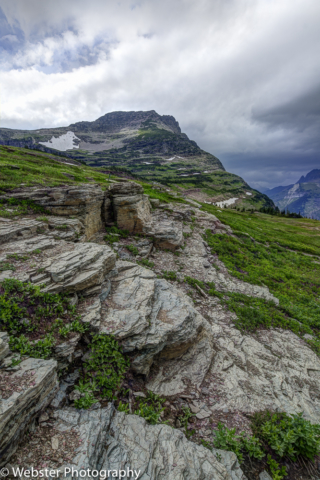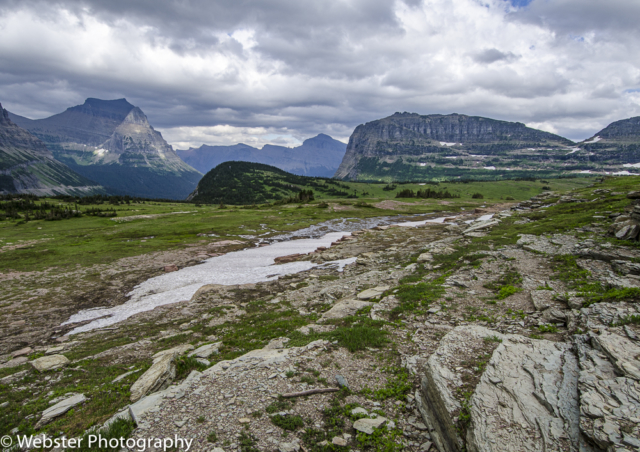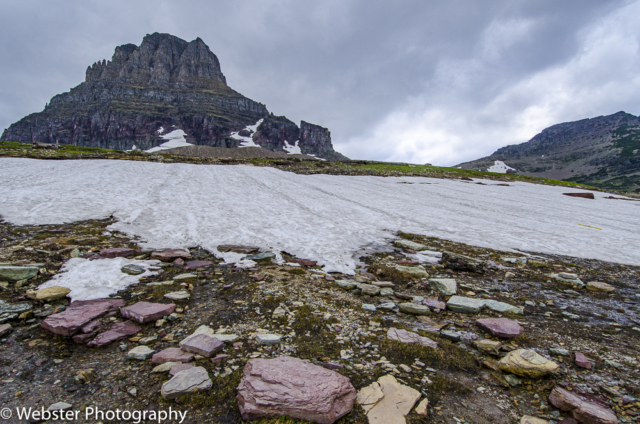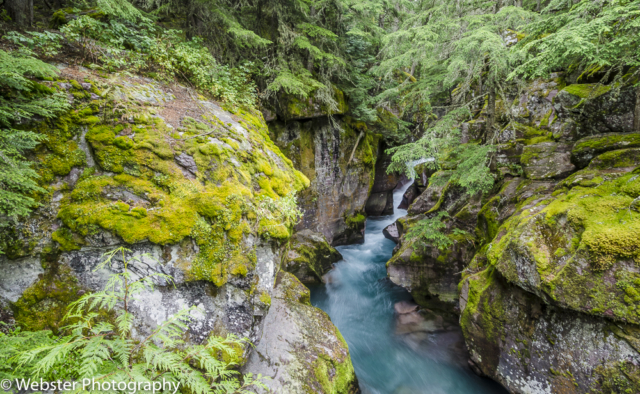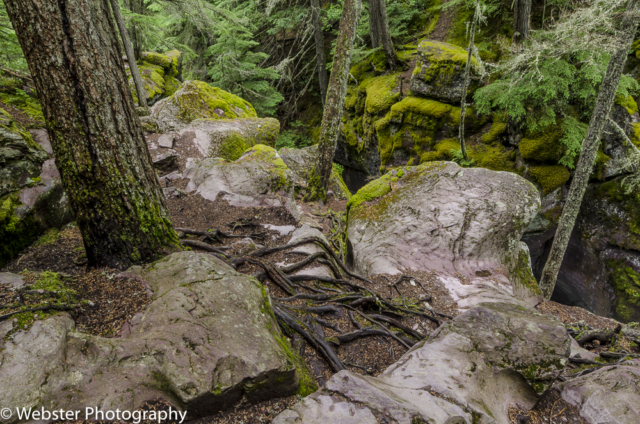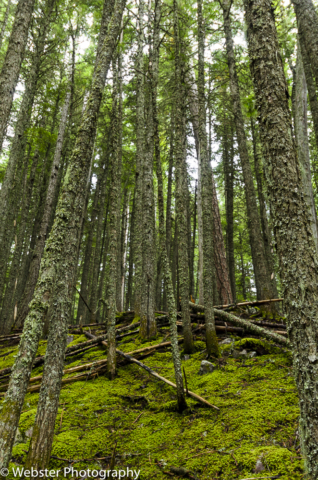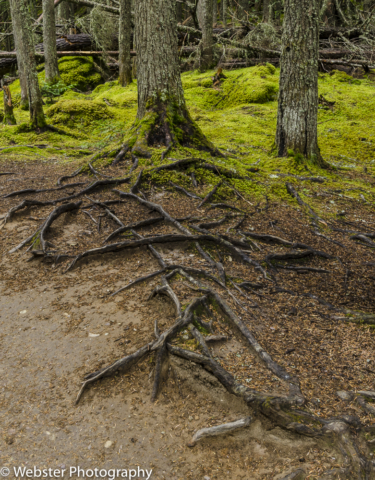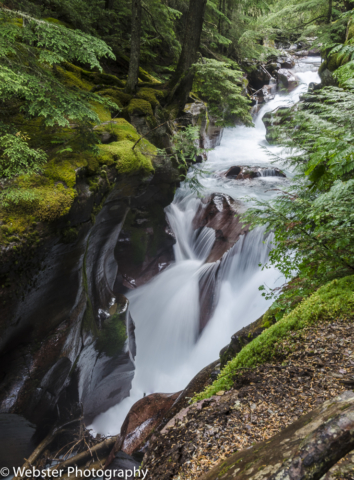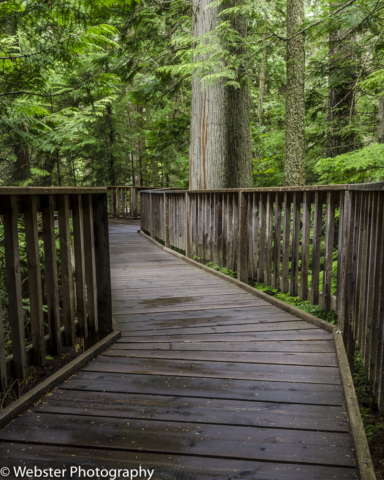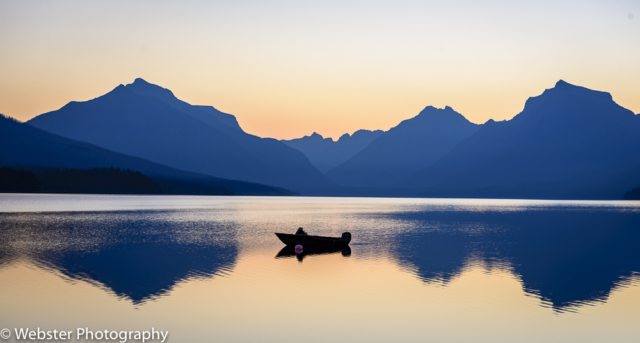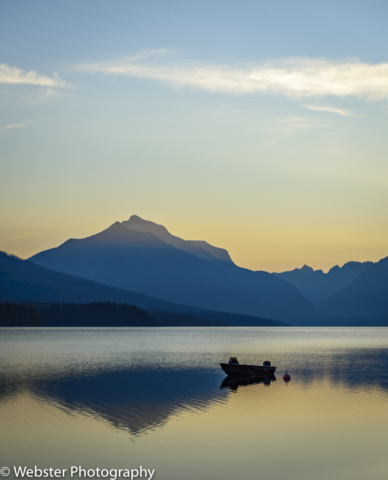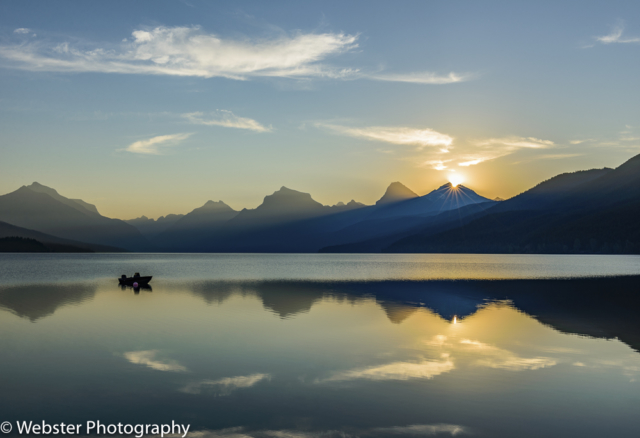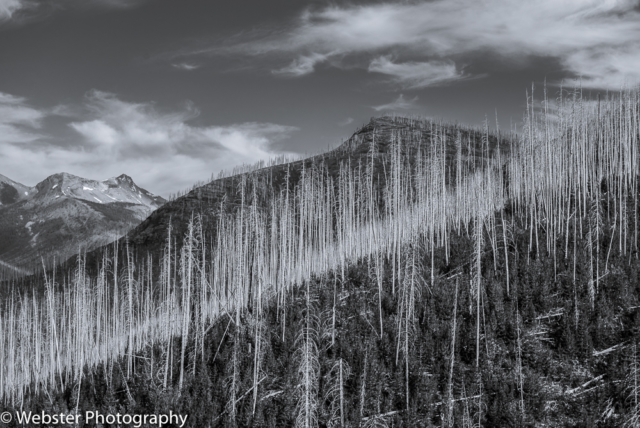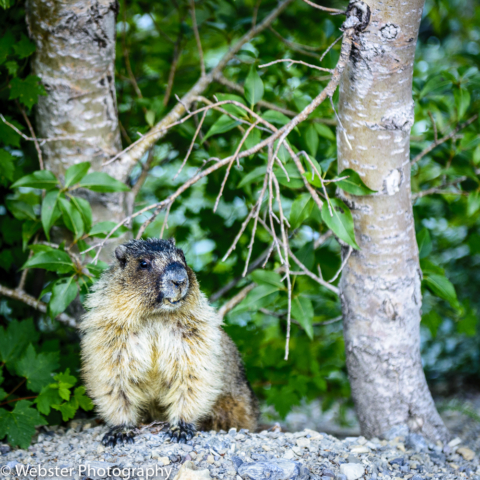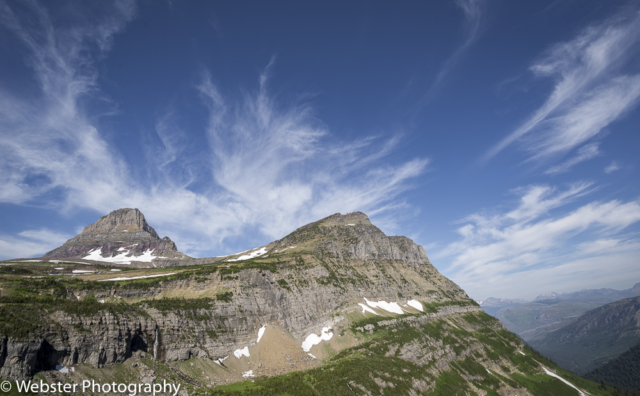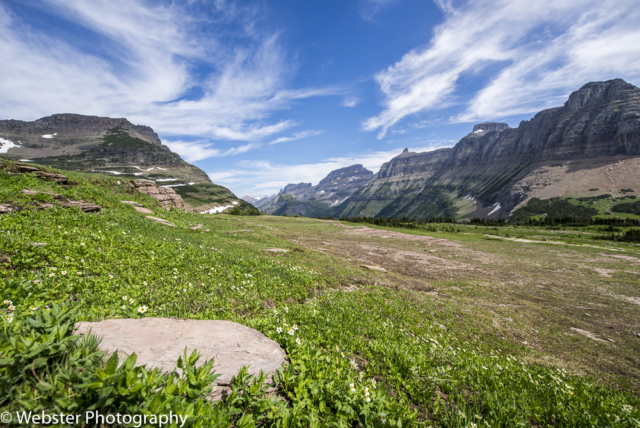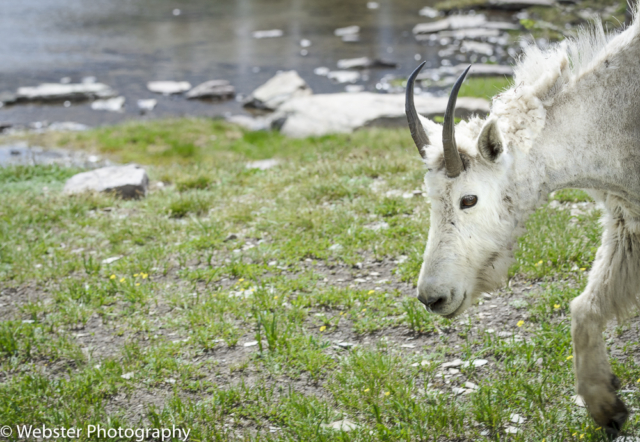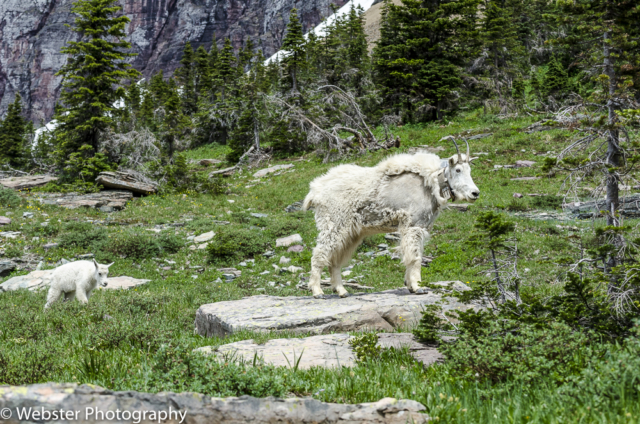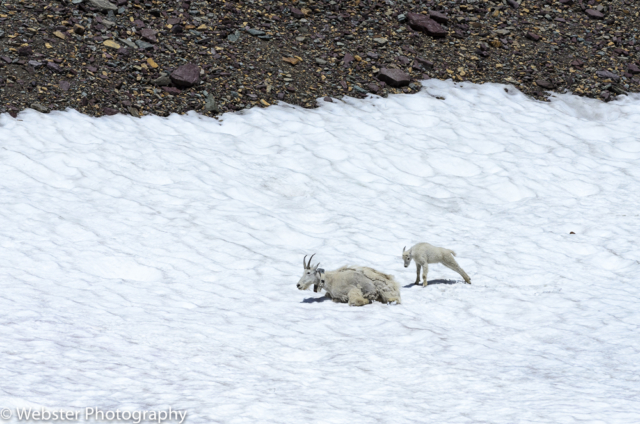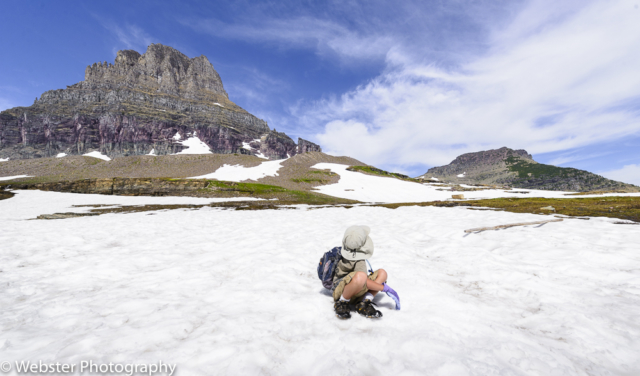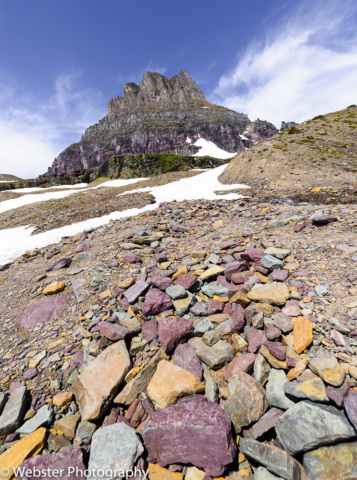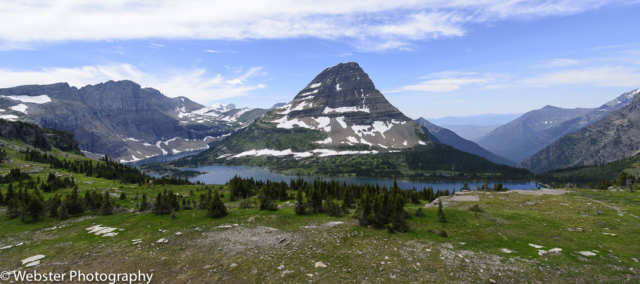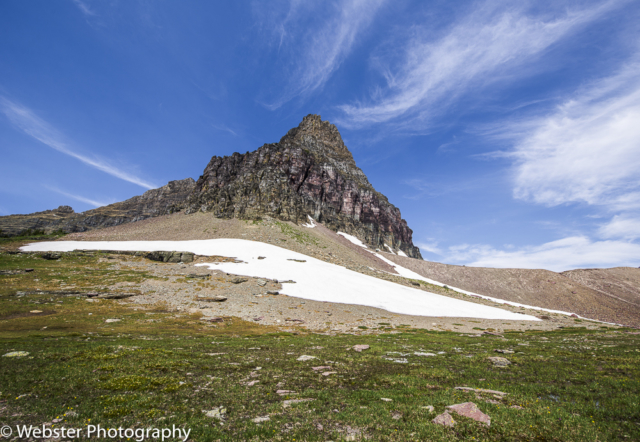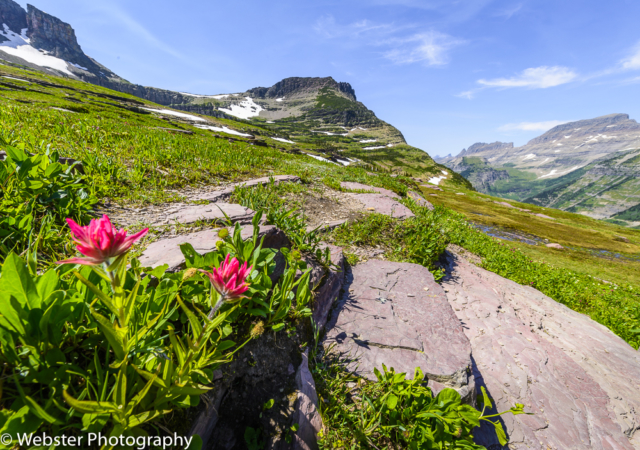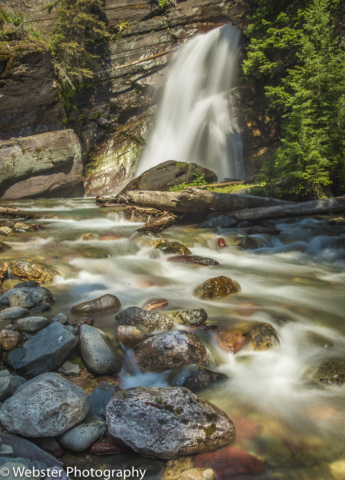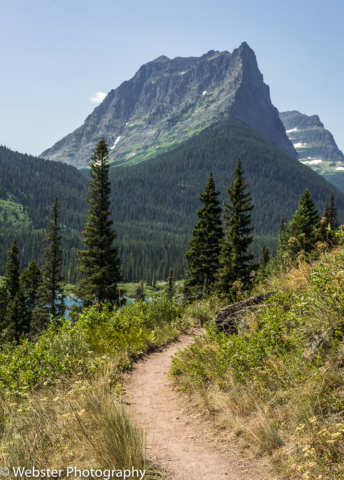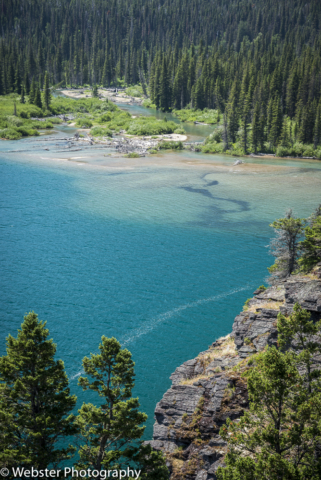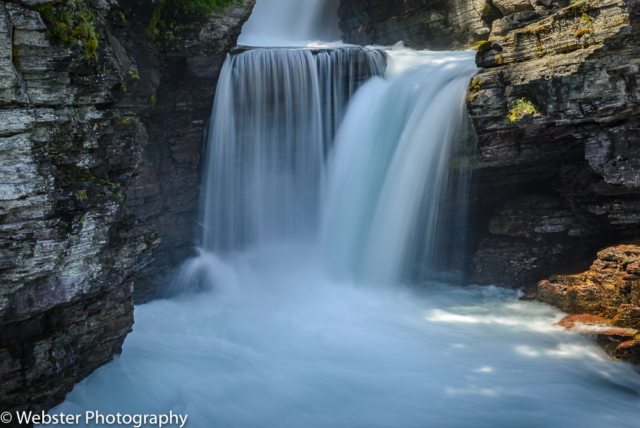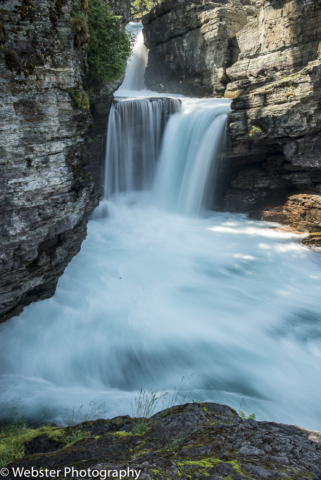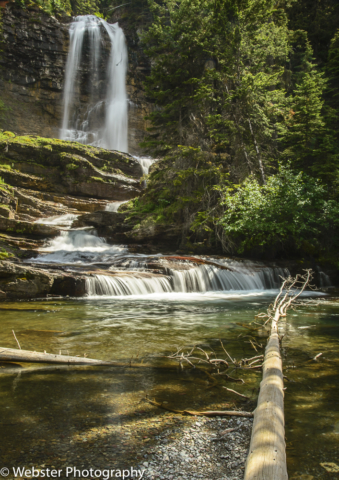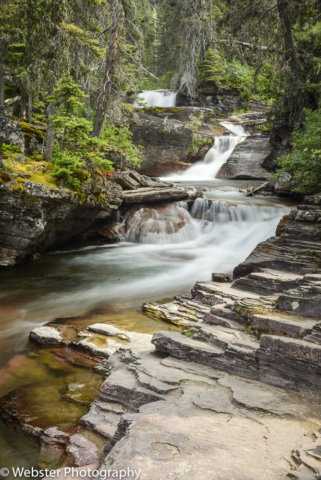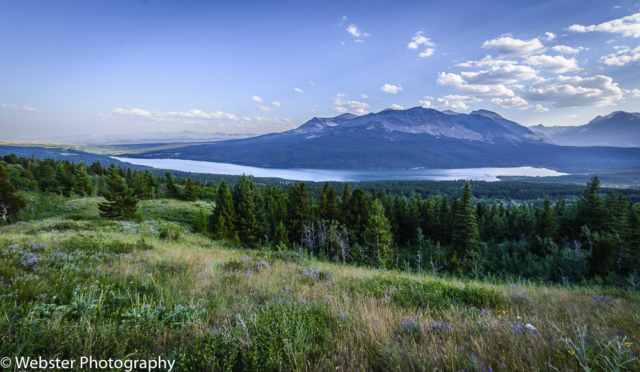Glacier National Park is a U.S. National Park located in northwestern Montana, on the Canada-United States border, adjacent to the Canadian provinces of Alberta and British Columbia. The park encompasses over 1 million acres and includes parts of two mountain ranges (sub-ranges of the Rocky Mountains), over 130 named lakes, more than 1,000 different species of plants, and hundreds of species of animals. This vast pristine ecosystem is the centerpiece of what has been referred to as the “Crown of the Continent Ecosystem,” a region of protected land encompassing 16,000 square miles.
Glacier National Park is dominated by mountains which were carved into their present shapes by the huge glaciers of the last ice. These glaciers have largely disappeared over the last 12,000 years. Evidence of widespread glacial action is found throughout the park in the form of U-shaped valleys, cirques, aretes and large outflow lakes radiating like fingers from the base of the highest peaks.
During the middle of the 20th century, examination of the maps and photographs from the previous century provided clear evidence that the 150 glaciers known to have existed in the park a hundred years earlier had greatly retreated, and in many cases disappeared altogether. In 1966, the park had 35 named glaciers large enough to be considered active. By 2015, only 26 named glaciers remained. The average area reduction was 39%, though some lost as much as 85%. This trend of glacier retreat is expected to continue as temperatures rise. (Source: Wikipedia/NPS Website)
Established: May 11, 1910
Size: 1,013,125 acres
Rank: 12
#Visitors in 2018: 2,965,309
(July 2012) – I first visited Glacier National Park during a photography workshop I took from Tim Cooper https://timcooperphotographyworkshops.com/ who at the time was affiliated with Rocky Mountain School of Photography https://rmsp.com/. I went by myself and after the encouragement of a friend of mine, I made the trip via the Amtrak Empire Builder. It was scheduled to be a 28 hour train trip, so I decided to tough it out and just booked a regular seat; no sleeper cabin. It took more than 37 hours due to delays in Milwaukee (+4 hrs) and Minot, ND (+5 hrs). Luckily I scheduled my arrival with an extra day of rest. The Amtrak stopped in East Glacier where I was able to walk to the Glacier Park Lodge. From there, I caught a shuttle to Many Glacier Hotel for the start of the workshop. I bummed a ride during the week from a woman who I later traveled to Utah with a year later. Just to complete the logistics of the travel portion of this visit, I caught the Amtrak at the West Glacier depot for my return trip home. The depot was within walking distance of the Belton Chalet where I stayed for the second half of the workshop. All in all, it was a fantastic experience; I met some really wonderful people and learned so much about the oil fields in ND from guys who were commuting from Washington state to ND either every 2 or 4 weeks.
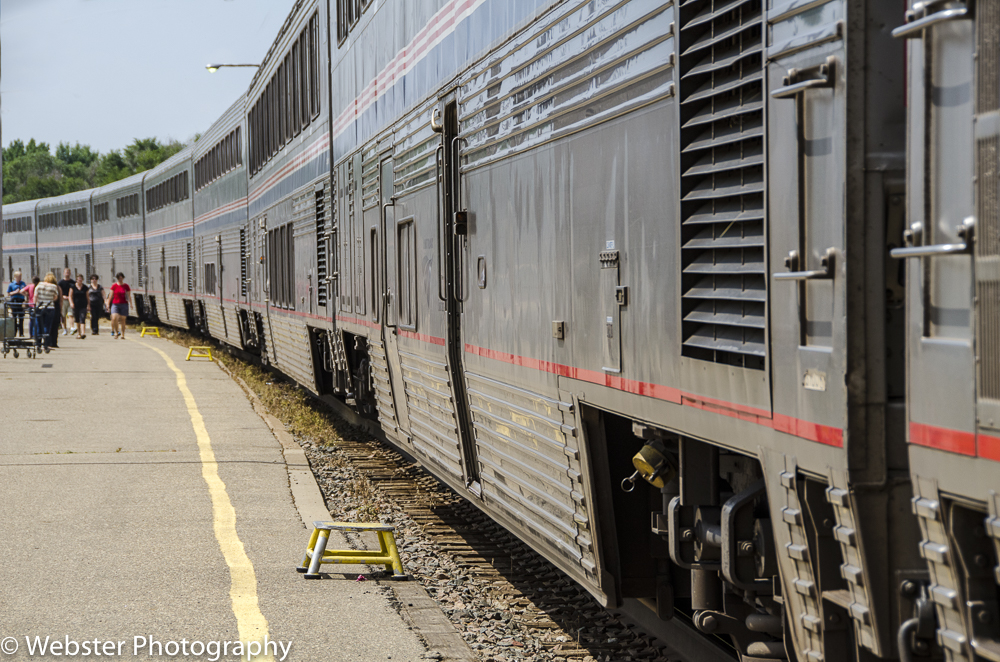
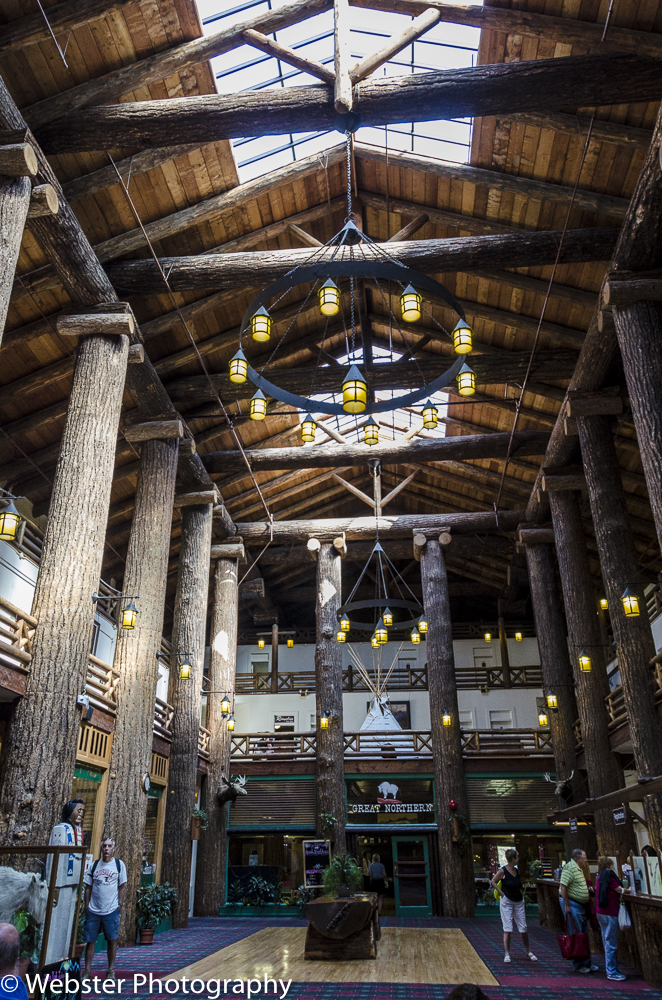
My first few days in the park were spent in the Many Glacier area. The weather was gorgeous! I was awed by the enormous peaks reflecting in Swiftcurrent Lake on the north side of Many Glacier Hotel. I felt privileged to stay in such a beautiful historic hotel which was built by the Great Northern Railway in 1914-15.
An evening hike along the Redrock Falls Trail revealed some spectacular peaks reflecting into the small lakes and streams along the trail. I spent quite a bit of time photographing the Redrock Falls as part of the photography workshop. This was the first time I learned how to shoot water with a slow shutter speed using a tripod. I was hooked on waterfalls after this!
The next morning, we got up very early to drive into the park via the Saint Mary entrance to the Wild Goose Island lookout, located on the north shore of Saint Mary Lake….. about a 30 mile drive from Many Glacier Hotel. We photographed this iconic site throughout the entire sunrise cycle. This was my favorite shot.
Later that same day, we shot some sunset photographs near the Many Glacier Hotel.
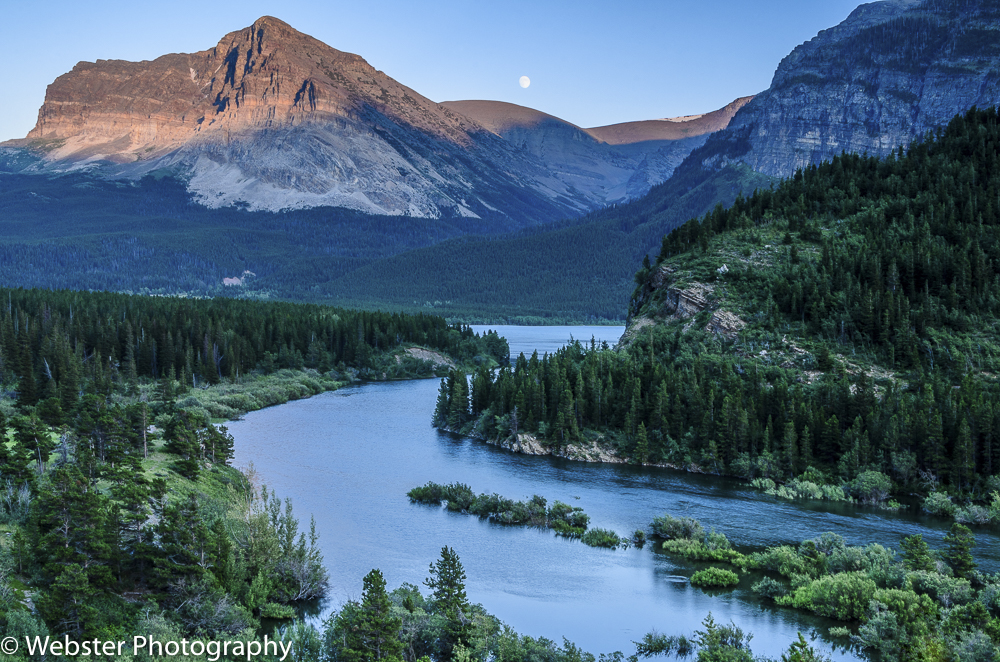
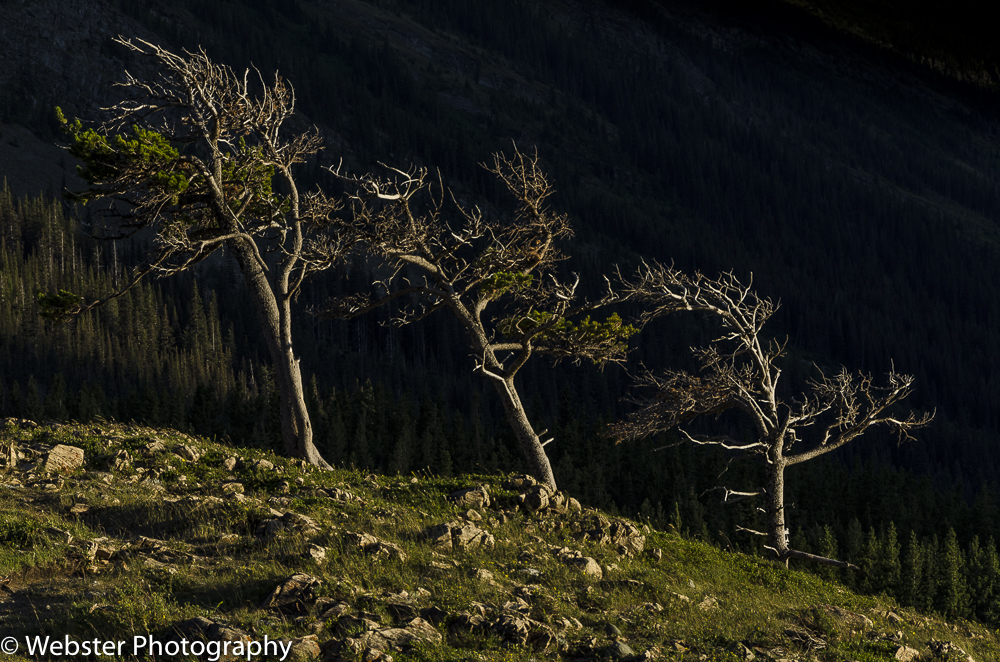
The next morning we hiked along the Grinnell Glacier Trail to the viewpoint over Grinnell Lake. To get to the trailhead, we first took a boat from the Many Glacier Hotel across Swiftcurrent Lake. We then hiked a short distance to catch another boat on Lake Josephine. We then hiked up to the Grinnell Lake overlook…. this is when I may have coined the phrase… photohiking; combining the two things I love doing most!
It was then time to stay at the west end of the park, so we spent the majority of one day traveling the Going-to-the-Sun Road, the 50-mile long road through the center of the park. It is the only major paved road in the park, so the traffic was pretty heavy as was the construction. We stopped often along the way too. It seemed that spectacular views were found on every turn! We passed a few of the historic Red Bus tour buses. Many of the red buses are restored originals that have been on tour since the 1930’s. Pretty cool, but it was still better to be on our own.
Our home in West Glacier was the beautiful and historic Belton Chalet, the first of the iconic lodges built by the Great Northern Railroad in 1910.
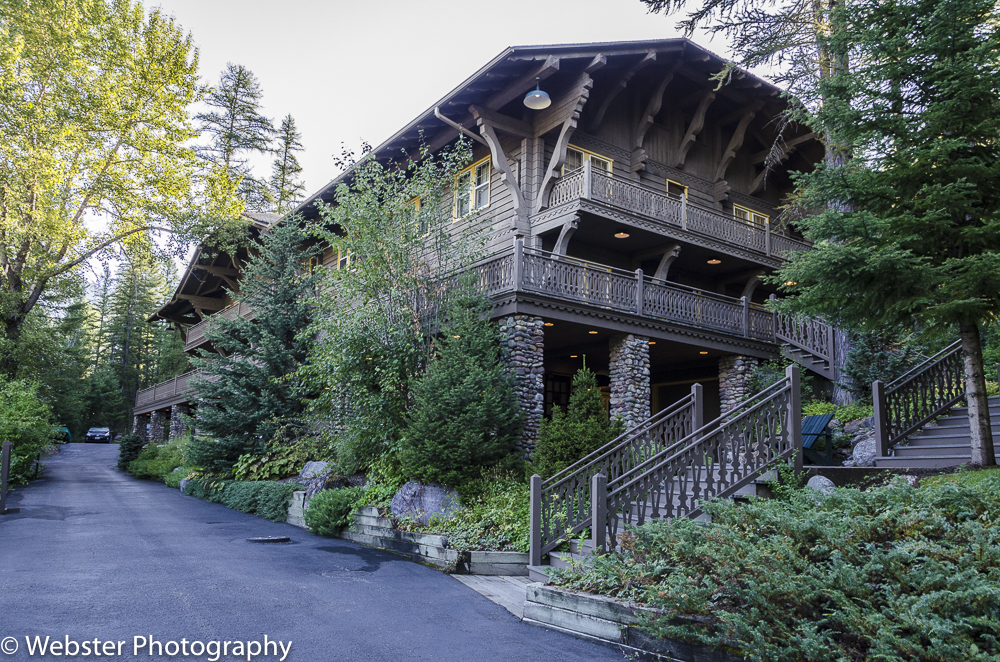
After checking into Belton Chalet, our workshop group set off to drive partway back up Going-to-the-Sun Road to the north end of Lake McDonald to capture some sunset photos.
Early the next morning, we drove back to the south end of Lake McDonald near Apgar Village to capture sunrise photographs. This was an amazing location for capturing the sunrise…. so far the best I’ve ever seen anywhere!
After our sunrise shoot, we ate a hot breakfast at Apgar Village and then continued driving north on Going-to-the-Sun Road to Logan Pass. The weather was a bit ominous by this time and before reaching the top of the pass, the hail started pounding down on us. I desperately was trying to push it to the top to see the Mountain Goats, but sadly, I had to turn back. I did get some really moody landscape shots, however.
Our final day in the park was spent hiking along Avalanche Gorge and on the Trail of the Cedars. What a very different part of the park this was, with the thick, lush forest and aqua-blue water gushing in the streams.
My visit to Glacier in 2012 was the first really comprehensive visit to one of the U.S. National Parks I had ever taken. It was also my first photography workshop since getting serious about photography. I was hooked!! Glacier will always be a very special place as a result. As you will see from my next blog post on my next visit in July 2015, I saw some new sights in the park (and finally saw Mountain Goats!!) and revisited some favorites, like Lake McDonald.
(July 2015)- My second visit to Glacier happened during the summer my boyfriend and I were taking a RMSP photography course in Missoula. It was our first visit together. We stayed in a hotel in Whitefish outside the west entrance of the park. We decided to revisit a couple of our favorite areas of the park; Lake McDonald and Logan Pass and then explore an area I hadn’t been to before; St. Mary Falls.
We got up very early on our first morning and drove to Apgar Village to the south end of Lake McDonald for a sunrise shoot. Another gorgeous morning!
We ate a hot breakfast in Apgar Village and then drove north on Going-to-the-Sun Road.
Our first planned stop was Logan Pass. I was really hoping to see Mountain Goats this time. The weather was beautiful so we easily made it to the Hidden Lake Overlook where we saw lots of goats- yay!!
From Logan Pass, we continued north on Going-to-the-Sun Road to hike along St. Mary Falls Trail. There were lots of beautiful falls and streams, so we spent a lot of time in this area. At one time along the trail, I saw a big set of antlers through the trees in front of me. This young Mule Deer buck came out of the trees onto the trail and started coming towards me. I summoned up as much courage as I could and remembered what I was taught…. I started backing up slowly but he kept coming at me. I backed all the way into a dense clump of trees and brush and he poked his antlers in towards me. I kept my cool and waited. He started walking away and after awhile, I came out to the trail. He turned and came at me again.,.. back into the trees I went. He eventually tired of this and went on his way. Once he was far enough away and my heart rate came down, I snapped a few photos. Luckily, that is the only close animal encounter I’ve had while hiking.
We attempted another visit in August 2015, but terrible forest fires made that impossible. Glacier is such as special park for us and there is so much more of it to explore, so we will be back!

